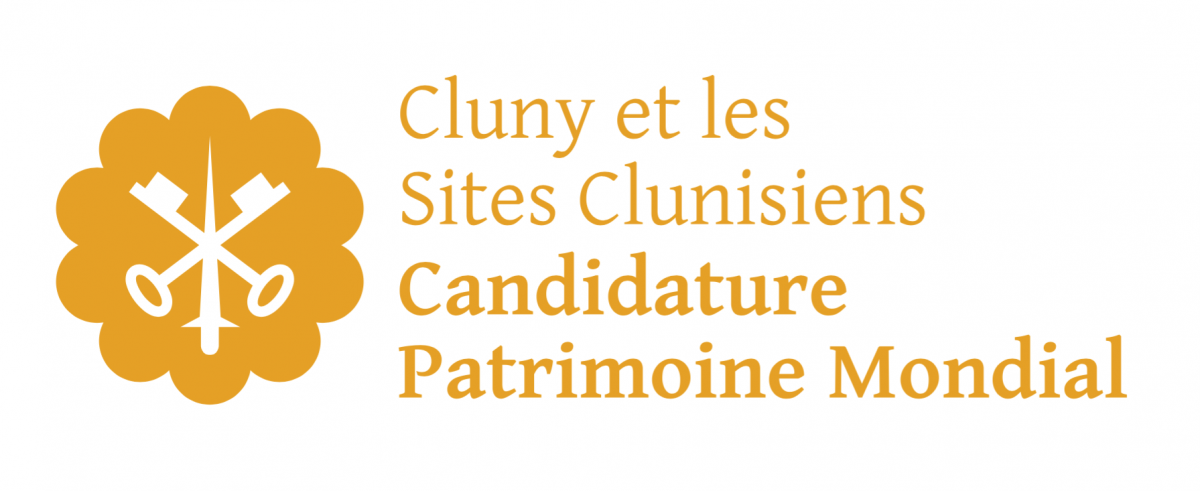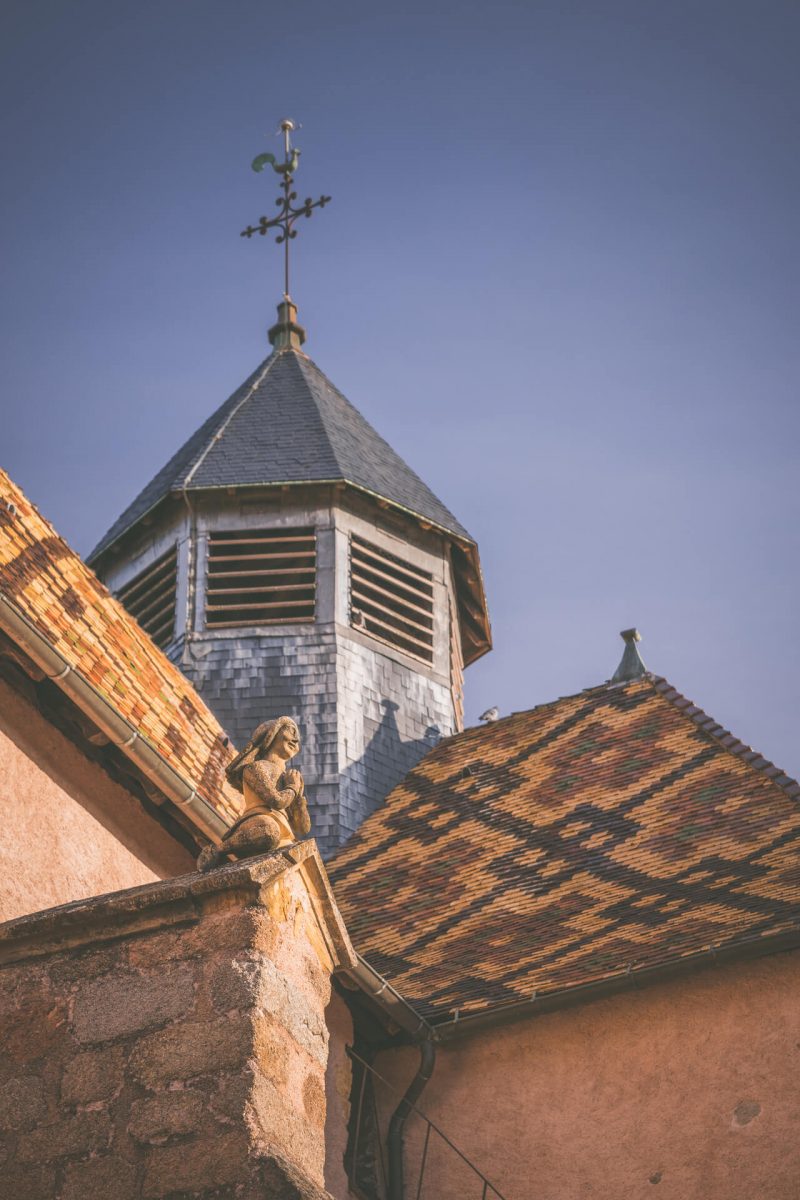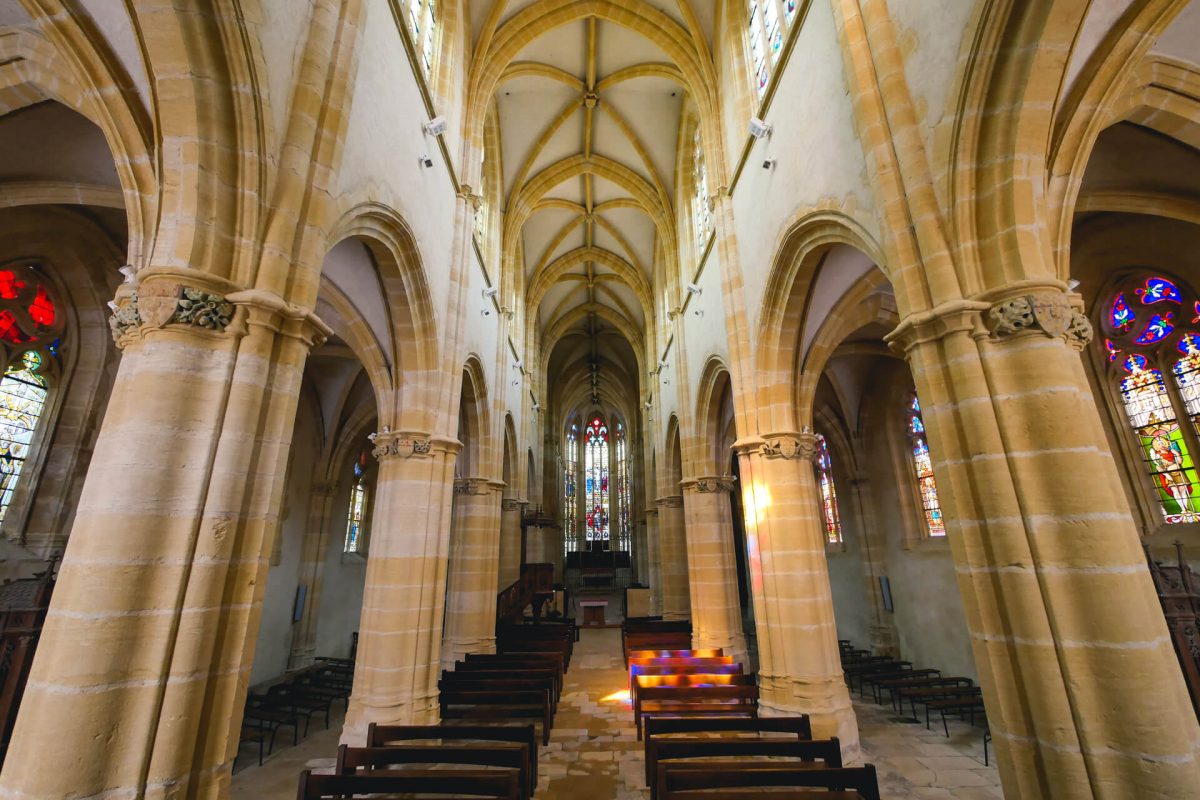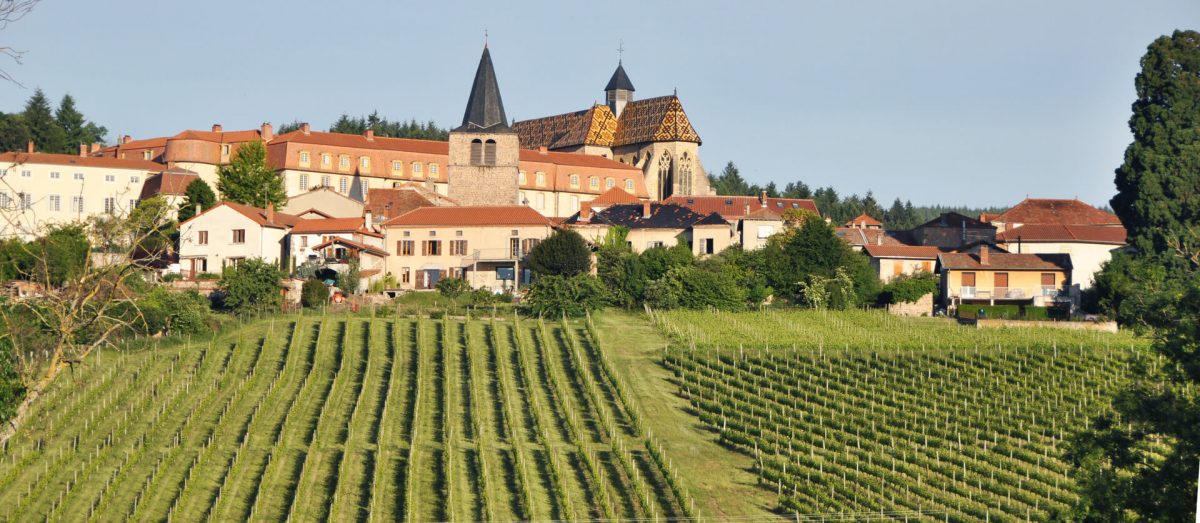North of the Loire, nestled in the heart of Ambierle, a village of character erected on a promontory, the priory will arouse your curiosity. Ebuilt mainly in the XIVe and XVe centuries, it is visible from afar thanks to its magnificent glazed tile roof. Installed on the foothills of the Madeleine mountains, it fits perfectly into a bucolic landscape and is a real gem for the Auvergne-Rhône-Alpes region.
![La toiture du prieuré d'Ambierle]()
© Evelyne Deveaux ![La toiture du prieuré d'Ambierle]()
© Evelyne Deveaux
Visit the priory of Ambierle
The site is accessible all year round free of charge. Every summer, the Maison de Pays d'Ambierle organizes guided tours for individuals during the summer.
The Maison de Pays also offers privileged tours for groups, on request.
Themed tours and calligraphy-illumination workshops are also offered for young audiences, schoolchildren (from CM to Lycée) through an approach to the history of the site through art and architecture.

Ambierle on the World Heritage List?
Ambierle is part of the candidacy of the Cluniac sites for the World Heritage of Humanity. It will be presented for inclusion on the National Tentative Lists of the States concerned by 2023-2024. Find out more
A colorful altarpiece
The most remarkable piece is the Passion altarpiece presented in the apse. This polyptych, which extends over 5 meters, includes a sculpted central part retracing the Passion of Christ and shutters. Moreover the donor, Michel de Chaugy, his family and their respective patron saints are in painting, on these shutters. The 60 sculptures represent the crucifixion, the kiss of Judas, the scourging, the crowning with thorns, the deposition from the cross, the entombment and the resurrection.
The work bears a Brussels stamp. Various historical indices thus indicate the province of Brabant like place of realization, around 1466, and probably the workshop of Rogier Van der Weyden (famous Flemish painter) or of his successor.
Recently restored, it will never cease to amaze you. So don't wait any longer and make your own opinion by coming to find out.

The priory of Ambierle on thein Via Sancti Martini
Labeled Cultural Route of Europe, just like the road to Saint-Jacques-de-Compostelle, the path of Saint-Martin allows you to cross Europe from East to West over 2500 kilometers. It was inaugurated in 2016, on the occasion of the 1700rd anniversary of Saint-Martin.
As a whole, Via Sancti Martini connects Szombathély, Martin's birthplace in Hungary, to Tours, the French city where his tomb is located. To reach France, he thus passes through Slovenia and Italy.
Ambierle and its priory are an essential stopping point on Via Sancti Martini.

The architecture of the buildings
Of the Romanesque church only vestiges remain. Gothic reconstruction (second half of the XVe century) captures the attention from afar with its elevation and its shimmering glazed tile roof which is reminiscent of the roof of the Cistercian abbey of La Bénisson-Dieu or even the Hospices de Beaune in Bourgogne.
The main facade was built between 1753 and 1757 to allow the installation of the monks of the order of Cluny. Imagine the contrasting atmospheres… The bustling kitchen then the calm of the refectory at mealtimes.
The spiral staircase located in the center of the building served many rooms with multiple uses according to the times.
With its stained glass windows and its XNUMXth century stallse century, the Gothic church of Saint-Martin dominates, for its part, the prioral ensemble. His Brussels altarpiece from 1466 is a wonder for everyone, young and old. It includes scenes from the Passion and portraits of donors.
The interior offers a magnificent architectural perspective due to the unity of style and the blond stone of the surroundings of Charlieu. Prior Antoine de Balzac d'Entragues adorned it with splendid glass roofs at the end of the XNUMXth centurye century, presenting some forty prelates (high ecclesiastical dignitaries) and holy figures.
Note that the fountain visible in the cloister courtyard is a work of local ceramist Pascal Verchère whose “Anagama” oven (firing in a wood oven) is visible on the way up to the Madonna site.
The history of the priory of Ambierle
Initially the priory was an abbey dedicated to Martin de Tours and founded by the Benedictines during the High Middle Ages. Presumably, it is between the VIIe and the IXe century that the first foundations date.
Ofe century, after being attached to the order of Cluny, the abbey becomes a priory.
Destroyed during the Hundred Years War, then rebuilt between 1450 and 1480.
In the XVIIIe century, victim of lightning, the prioral bell tower collapsed and a bell tower replaced it. At the time, its bells were melted down and transformed into coin blanks.
Partially rebuilt in 1753, the priory offers a large facade and some remains of the fortifications that surrounded it until the opening of the road in 1883.
In 1840, Prosper Mérimée established the first list of Historical Monuments and registered the church. The facades and the roof were inscribed in 2010.
The buildings now accommodate the Country House, the town hall and private accommodation.

Saint-Martin priory church
The Prior Antoine de Balzac d'Entragues (XVe century), sensitive to the decorative arts, wanted his church to shine and has largely used his personal fund for this purpose. The harmonious ensemble that imposes itself on you upon entering will capture you with its beauty.
This flamboyant Gothic church has XNUMXth century stained glass windows.e and a monastic choir made up of 36 stalls. Its Passion altarpiece includes scenes carved in polychrome wood and paintings attributed to the Flemish school of painter Rogier Van Der Weyden.
We notice some original ornamental elements such as the presence in the stalls of a family of wild men, a decorative theme in vogue in the XVe and XVIe centuries. This theme is also found in the frescoes in the room known as the Preux (room unfortunately closed to the public).

DID YOU KNOW ?
The first bishop of Texas is buried in the church. Monsignor Jean-Marie Odin, born and died in Ambierle (1800-1870) was a missionary in the South of the United States in the XNUMXth century.e century. He founded the first diocese of Texas in 1847 and included all of that state. Monsignor Jean-Marie became Archbishop of New Orleans in 1861. He witnessed the conquest of the West and the Civil War.
Mysteries and legend of the priory of Ambierle
Legend has it that Saint Martin asked the fairies to build a church in Ambierle, which they did with the yellow stones of the region. But the devil set fire to the building. In retaliation, Saint Martin had them set in stone by his demons. We can still see them today, statuettes all around the church at the top of each flying buttress.
You will have a feeling of peace, calm and serenity when entering this place steeped in history.
Claudie, head of the Maison de Pays
The most beautiful points of view
Three ways to admire this unmissable site of Roannais in all its aspects:
- First, when you arrive in the village, along the vineyards of the Domaine du Palais, you will have a magnificent overview: in the foreground, the vineyard and in the background, the priory and its colorful roof. Whether under a beautiful sun or on the contrary at night, this view is simply sublime.
- Then, well installed in the cloister courtyard, in front of you, in close-up, the roof with glazed tiles.
- To finish, gain height and climb to the site of the Madonna. A clear view is offered to you with the priory below and the Roanne plain in the distance.

Ambierle is also ...
- We cannot talk about the Prieuré d'Ambierle without mentioning the gourmet restaurant of the same name. With one star in the Michelin Guide, chef Thierry Fernandes puts all his talent at the service of refined and creative home cooking. Find this restaurant and all the restaurants in Roannais here.
- To complete your visit, stop at Alice Taverne museum, fantastic museum bearing witness to the life of our countryside. Enter the village grocery store, browse the peasant house, the classroom and share the daily life of our ancestors. Fun visit to do with the family.
- Do you want to bring back a souvenir or a local delicacy? Head to the Maison de Pays to discover regional products: the wines of the Côte Roannaise, Ambierle shortbread, Chérier jam ... but also beautiful pieces made by local artisans.
- Book Village : the old character of the village, the summer markets, naturally lead Ambierle to welcome second-hand booksellers, booksellers, printers, bookbinders, and other book trades… Book Markets are organized on certain Sundays throughout the year. In addition, each year in September, Ambierle comic book festival is the important event of the village with over 2 days of fair some thirty authors, the stands of publishers and booksellers, animations.
- And if you are visiting the priory, plan a stop at one of the winegrowers of the Côte Roannaise. These enthusiasts will make you appreciate the fruit of their work and discover this AOC Côte Roannaise vineyard. A great surprise…
PRACTICAL INFORMATION
Open
Saint Martin Priory Church
Church Street
42820
Ambierle
04 77 65 62 33 – 06 88 98 55 03
Calculate my route
Frederique's opinion
With its colorful roof, the priory of Ambierle is one of the lighthouses of Roannais. It attracts you to it and invites you to discover its history and its architecture. I advise you to go through the country house to access the cloister courtyard. Completely rehabilitated, it offers a splendid view of the roof of the priory.










